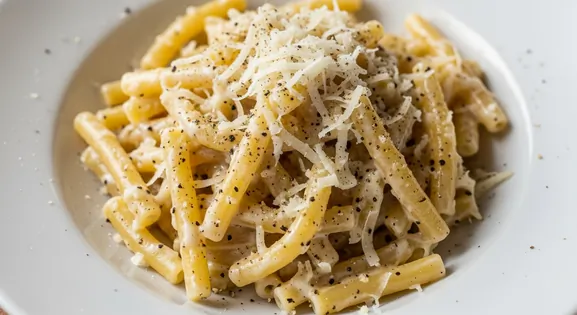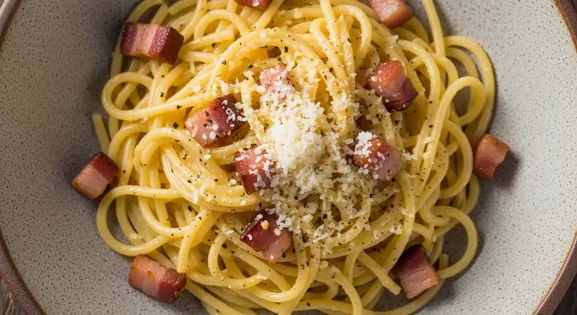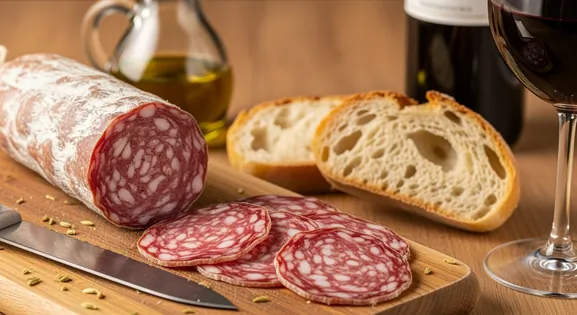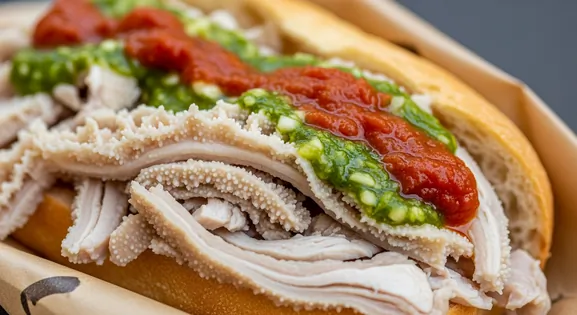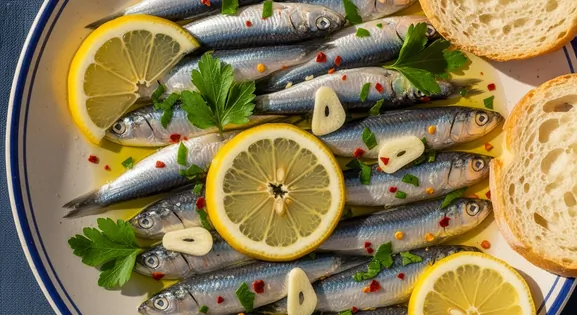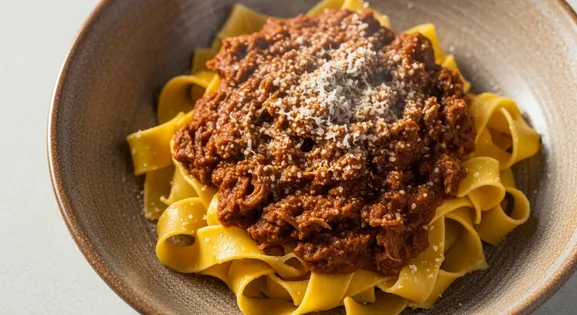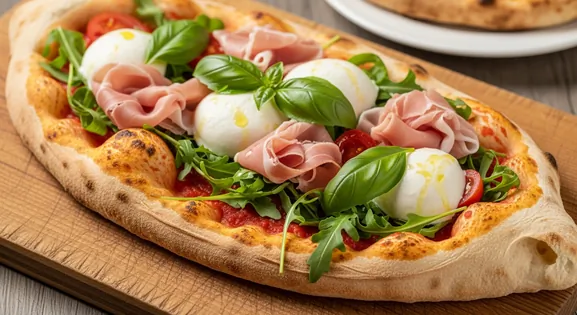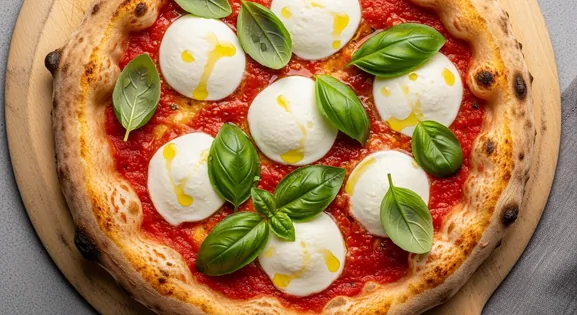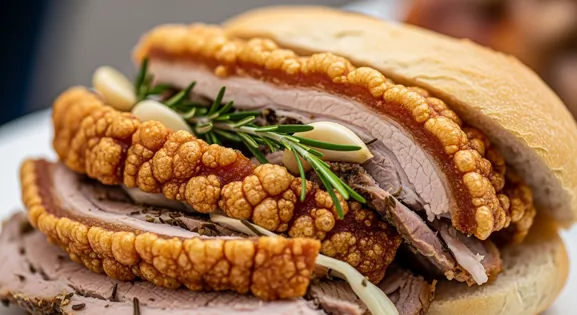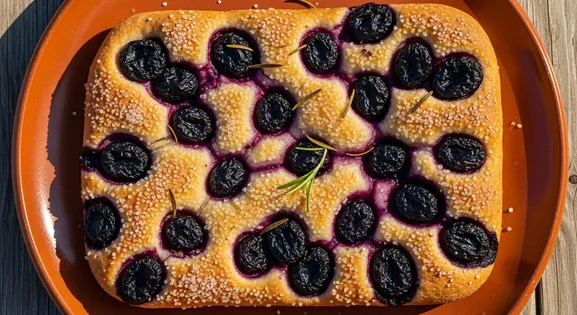Pasta e Patate con Provola in Italy: A Complete Food Lover's Guide
Pasta e patate cu' provola
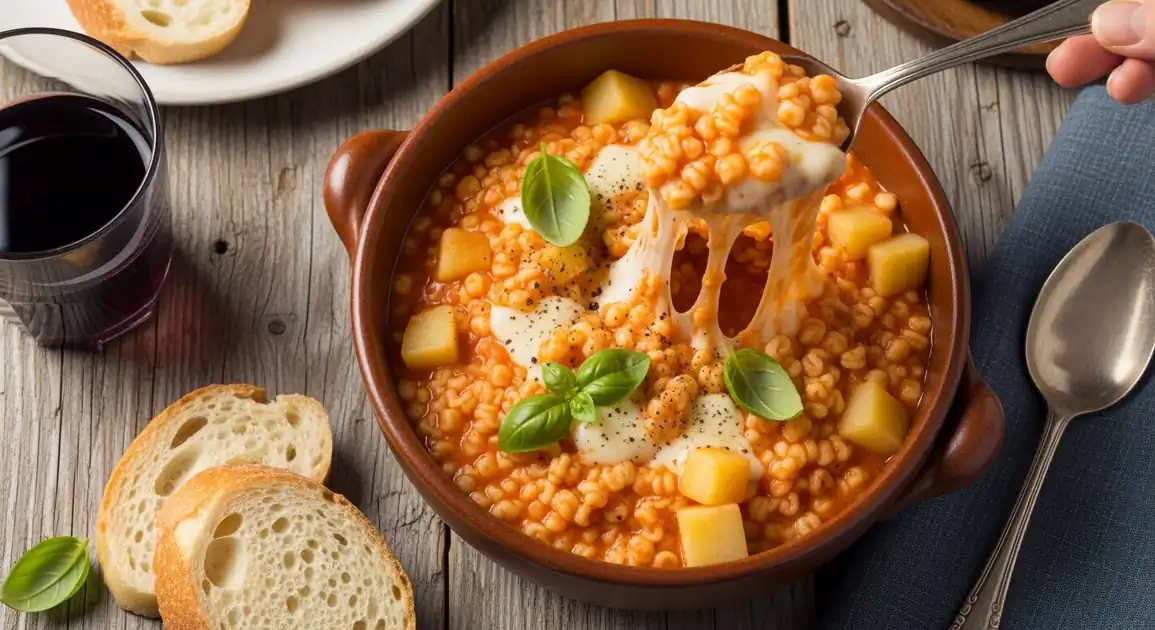
A Culinary Snapshot
Pasta e Patate con Provola is a quintessential Neapolitan comfort food exemplifying the region's 'cucina povera' (peasant cuisine) tradition. This hearty dish combines pasta (traditionally mixed shapes) and potatoes in a thick, savory base enriched with tomato, aromatics, and finished with melting strands of provola cheese. Neither soup nor pasta dish in the conventional sense, it occupies its own unique category with a consistency that's luxuriously thick as the starches from both pasta and potatoes create a naturally creamy texture.
Spotting Quality: What to Look For
What to Look For
-
Proper thickness and consistency
The dish should be thick and creamy, not watery. This indicates it was prepared with the right technique and cooked long enough for potatoes to partially dissolve.
-
Freshly-added provola cheese
Quality restaurants add provola just before serving so it's properly melted and stretchy, not congealed from sitting too long.
-
Clean, aromatic smell
Should have a pleasant aroma of herbs, cheese, and tomato without any sour or off-putting smells that could indicate old ingredients.
-
Appropriate serving temperature
Should be served very hot to ensure optimal quality and proper melting of the cheese. Lukewarm serving could indicate it's been sitting out.
What to avoid
-
Watery or soup-like consistency
Indicates improper cooking technique or shortcuts. Traditional pasta e patate should be thick enough that a spoon almost stands up in it.
-
Pre-melted, congealed cheese
If the provola looks hardened or has an oily separation, it suggests the dish was made much earlier and reheated, compromising its quality and appeal.
-
Unusually bright red color
Authentic pasta e patate uses just a touch of tomato. An overly red appearance could indicate the use of excessive tomato sauce to mask other quality issues.
-
Strong garlic smell
While some recipes use a small amount of garlic, an overwhelming garlic aroma often masks poor quality ingredients or lack of proper cooking technique.
How to Order Pasta e Patate con Provola
Enhancing the Flavor: Classic Pairings
Crusty Bread
Side
A rustic, crusty bread, such as pane cafone, is ideal for scooping up the thick, flavorful sauce and ensuring no delicious drop is left behind.
Full-Bodied Red Wine
Beverage
A robust red wine, like a local Aglianico from Campania or a similar Southern Italian varietal, complements the richness and savory depth of the dish beautifully.
Explore Pasta e Patate con Provola in Detail: City Guides
Discover where to find the best Pasta e Patate con Provola and learn local tips in these cities:
From Humble Origins: A Brief History
Born from necessity in working-class Naples, Pasta e Patate emerged as an ingenious solution to stretch limited ingredients into a satisfying meal. The use of mixed pasta shapes ('pasta mista') originated from the frugal practice of saving leftover ends of various pasta types. The addition of provola cheese was a later enhancement, transforming the humble dish into something more special for days when a little extra was affordable. Throughout Naples' challenging economic periods, this dish has remained a symbol of the city's culinary ingenuity and ability to create extraordinary flavor from ordinary ingredients.
Traditional Preparation Techniques
Traditional preparation begins with sautéing a soffritto of onion, celery, and sometimes carrot in olive oil. Cubed potatoes are added and briefly cooked before introducing a small amount of tomato (paste or fresh), herbs, and water or stock. After simmering until potatoes begin to break down, mixed pasta shapes are added directly to the pot (not pre-boiled). The key technique is allowing some potatoes to disintegrate completely, thickening the dish while others remain intact for texture. Just before serving, pieces of provola cheese are stirred in, creating the signature stretchy cheese strands when served hot.
Key Ingredients of Pasta e Patate con Provola
Pasta Mista
This dish traditionally uses a mix of small, broken pasta shapes, often leftover from other preparations. The variety of shapes contributes to the unique texture and helps thicken the dish as their starches release.
Quality indicator: Look for a diverse mix of small pasta shapes, indicating adherence to tradition and contributing to varied textures.
Potatoes
Cubed potatoes are a foundational ingredient, providing bulk, a creamy texture as they break down, and a subtle sweetness that balances the savory elements. They are crucial for the dish's characteristic thickness.
Quality indicator: Potatoes should be tender and partially disintegrated, creating a creamy consistency while still offering some textural bite.
Provola Cheese
This semi-hard, stretched-curd cheese, often smoked, is added at the end of cooking. It melts into luscious, stretchy strands, imparting a rich, slightly smoky, and savory depth that defines the "con provola" version.
Quality indicator: The provola should be visibly melted and stretchy, forming long, gooey strands when served hot, indicating freshness and proper integration.
Local Pasta e Patate con Provola Variations in Italy
Pasta e Patate without Provola
The basic version without cheese, common during leaner times or for those avoiding dairy. The focus is on the harmonious marriage of pasta and potatoes.
Pasta e Patate with Pancetta
Enhanced with cubes of pancetta or pork cheek (guanciale) for a richer flavor profile and added depth.
Pasta e Patate with Pork Rind
A traditional addition where pork rind (cotica) is used to add richness and depth of flavor, then typically removed before serving.
Pasta e Patate with Smoked Provola
Using smoked provola cheese instead of regular provola, adding a distinctive smoky dimension to the dish.
Dietary Information
Dietary Information
Important Note for Travelers: Your safety is our priority. Below are the common allergens associated with the traditional preparation of this dish. However, recipes and ingredients can vary significantly between establishments. Always confirm all ingredients directly with the food vendor before ordering, especially if you have a severe allergy.
Potential Allergens
Dietary Suitability
Frequently Asked Questions about Pasta e Patate con Provola
What is Pasta e Patate con Provola?
Pasta e Patate con Provola is a traditional Neapolitan dish combining pasta and potatoes in a thick, savory base, enriched with tomato and finished with melted provola cheese. It's a prime example of 'cucina povera' (peasant cooking), transforming humble ingredients into deeply satisfying comfort food. The dish typically uses mixed pasta shapes and achieves a thick, creamy consistency as potatoes partially dissolve during cooking.
Why do they use mixed pasta shapes in Pasta e Patate?
Traditionally, 'pasta mista' (mixed pasta shapes) is used because the dish originated from frugal cooking practices, combining leftover pasta bits. Today, many establishments honor this tradition, though some may use a single type. Authentic versions feature mixed shapes, adding textural interest as each cooks slightly differently.
Is Pasta e Patate con Provola vegetarian?
Traditional Pasta e Patate con Provola is vegetarian but not vegan, as it includes cheese. The base recipe uses pasta, potatoes, onions, tomatoes, and herbs. However, some variations may include pancetta or pork rind. For a vegan version, you can request it without cheese ('senza provola'), though this alters the traditional experience.
How can I tell if a restaurant makes good Pasta e Patate?
Quality Pasta e Patate should have a thick, creamy consistency, not watery. Look for restaurants specializing in traditional Italian dishes. Good indicators include mixed pasta shapes, a proper thick consistency, stretchy provola cheese, and aromatic herbs. Establishments frequented by locals often serve the most authentic versions.
Can people with gluten intolerance eat Pasta e Patate?
Traditional Pasta e Patate contains wheat pasta and is not gluten-free. While potatoes are gluten-free, pasta is a key component. Some modern restaurants might offer gluten-free pasta options upon request, but this is not traditional and affects the dish's authentic texture and consistency, as starch release from standard pasta is crucial.
What is provola cheese and what does it add to the dish?
Provola is a semi-soft, stretched-curd cheese common in Southern Italy, similar to mozzarella but aged longer for more flavor. In Pasta e Patate, small pieces are added at the end, melting into stretchy strings. This adds richness, creaminess, and a distinctive texture, with its mild, often smoky flavor beautifully complementing the starchy potatoes and pasta.
Expert How-To Guides about Pasta e Patate con Provola
How to Identify Authentic Pasta e Patate con Provola
Learn the key characteristics that define a properly prepared traditional version of this classic Neapolitan dish.
- Look for a thick, creamy consistency – authentic pasta e patate should not be watery or broth-like but rather have a dense, almost stew-like texture.
- Authentic versions use mixed pasta shapes ('pasta mista') – a hallmark of the dish's humble origins.
- The potatoes should be partially broken down, thickening the dish, but some chunks should remain for texture.
- Provola cheese should be melted throughout, creating stretchy strands when served.
- The color should be a warm orange-red from tomato, not bright red (indicating too much tomato) or pale (indicating lack of proper sautéing of base ingredients).
- A light aroma of basil, parsley, and perhaps a hint of garlic should be present – never overwhelming.
How to Spot Authentic Pasta e Patate Restaurants
Learn how to identify establishments across Italy that serve truly authentic and delicious versions of this traditional dish.
- Seek smaller, family-run trattorias or osterias, often found slightly off the main tourist paths.
- Look for restaurants frequented by local patrons, as they often know where the best traditional food is served.
- Check if pasta e patate is a regular menu item, not just a daily special, indicating it's a house specialty.
- Look for establishments displaying signs like 'Cucina Tradizionale' or 'Piatti Tipici', signifying pride in traditional recipes.
- Observe the dish at other tables – it should appear thick, creamy, and with visible, melted provola.
- Don't hesitate to ask about ingredients like mixed pasta shapes or provola to gauge authenticity.
How to Enjoy Pasta e Patate Like a Local
Cultural tips for appreciating this quintessential Italian comfort food properly, ensuring you enjoy it like a true local.
- Eat it hot – the provola is best when freshly melted and stretchy.
- Use a spoon rather than a fork to properly enjoy the thick consistency.
- Pair with crusty local bread for scooping up the last bits.
- Don't rush – this is slow food meant to be savored.
- Consider ordering a glass of a robust Italian red wine to complement the rich flavors.
- It's acceptable to request a little extra provola on top ('un po' più di provola') if you enjoy the cheese aspect.
Our Commitment to Quality
At Tasteplorers, our mission is to provide the most accurate and useful travel information in the world. To achieve this, all content on this site is created through our unique editorial framework. We utilize leading AI research tools, guided by our proprietary prompts, and a multi-stage validation process. This entire system is overseen by our editorial team to ensure everything we publish meets our high standards for accuracy, cultural nuance, and practical value for travelers.
Learn more about our Editorial Process and our Mission.
Countries
Explore regions
Europe
Discover Europe's diverse culinary landscape, from Mediterranean flavors to hearty Alpine fare. Learn to navigate markets, decode menus, and eat like a local.
Latin America & Caribbean
Discover the vibrant cuisines of Latin America & the Caribbean. Our expert guide covers everything from Mexican street food to Peruvian ceviche and market tips.
Oceania
Explore Oceania's diverse food scene. Learn about Polynesian earth ovens, Fijian feasts, and the vibrant café culture of Australia and New Zealand.
Southeast Asia
Explore Southeast Asia's diverse food cultures from Thailand to Vietnam. Get expert tips on navigating spice levels, choosing quality vendors, and understanding the rich traditions of the region.
